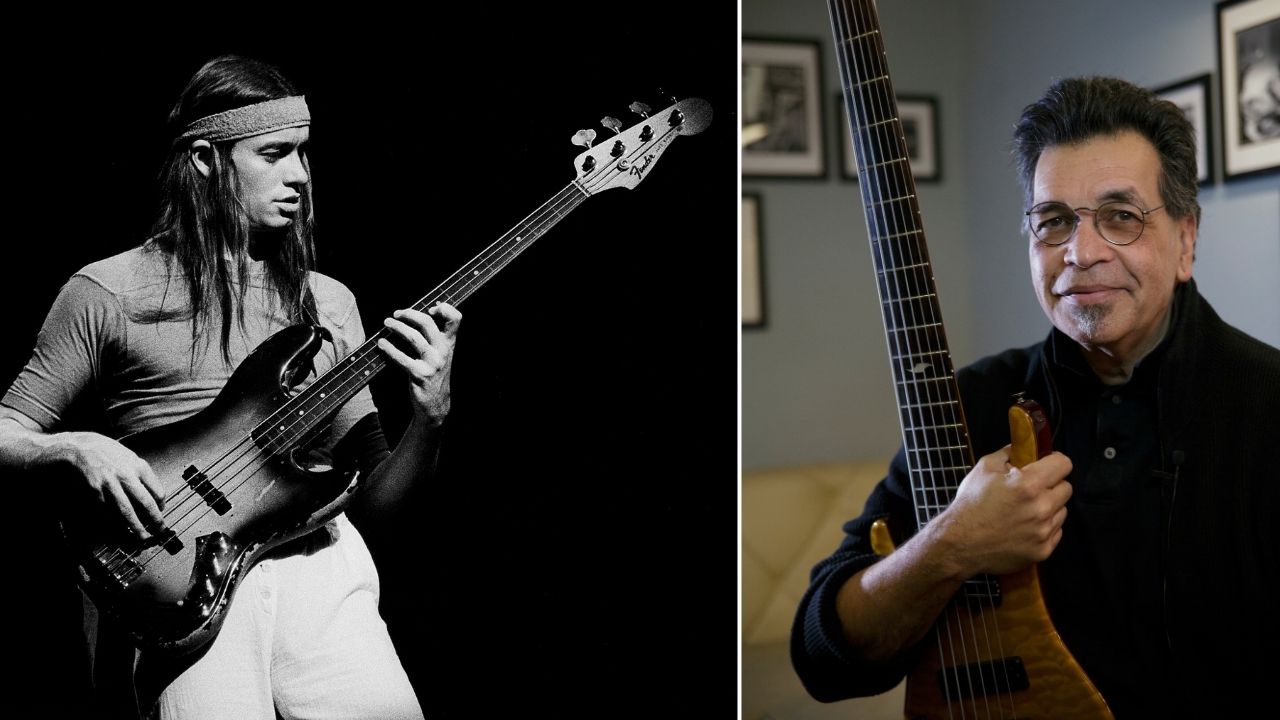Best high-end acoustic guitars 2025: 10 of the most lust-worthy instruments for guitarists
Our pick of the world's finest acoustic guitars from Martin, Taylor, Gibson, Epiphone, Breedlove, Guild, Takamine…
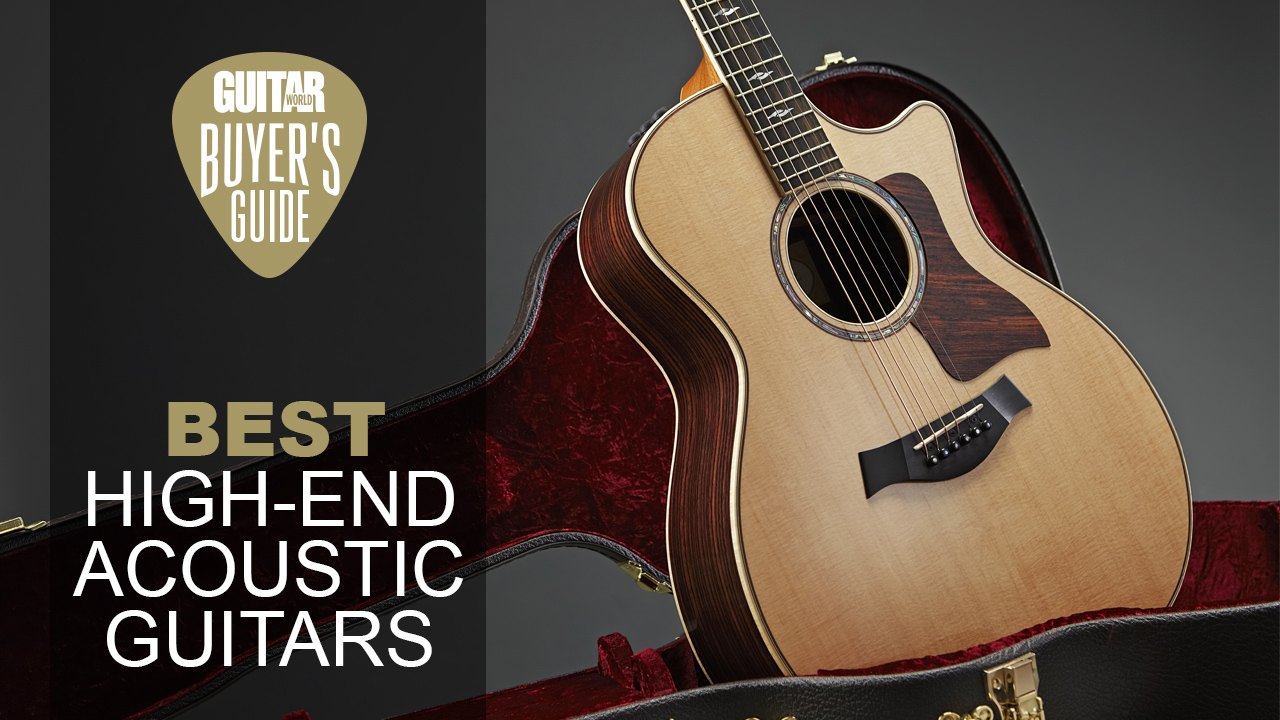
If you're prepared to sink serious money into an instrument, we'd wager buying one of the best high-end acoustic guitars is the best place to invest it. In a nutshell, it's where you're going to get the best bang for your buck.
Every cent you spend will buy you an uplift in playability, build quality, materials and tone. If a good electric guitar requires a skilled luthier to piece it together, trust us, an acoustic guitar is on a different level. They are notoriously difficult to craft.
Remember that time the Fender Custom Shop built a Strat out of cardboard? It ended up sounding just like a Strat. Not so with acoustic guitars, tonewoods really matter, body size is hugely important, bracing design is critical – heck, even carving a slither from an individual brace affects the final tone.
If, like us, you value an acoustic guitar that really speaks to you, a guitar that resonates so freely and sings so sweetly that you'll swear it's got a pulse, then follow our advice and spend as much on an acoustic as you can sensibly afford. It'll be the most dazzling thing you'll ever see or hear – who are we to put a price on beauty?
Best high-end acoustic guitars: Our top picks
There's no obvious victor in our list because your choice will be influenced by the style of music you intend to play. Frankly, every high-end acoustic in this guide deserves to be a winner for someone.
But, if we were to pick just one then it would have to be the Taylor 814ce, simply because it will excel at anything asked of it. Taylor's Grand Auditorium shape provides all the power you will ever need but without any loss of clarity. It ticks so many boxes and, of course, its appearance is utterly seductive.
Our second choice would be the Guild F-55E. This Jumbo is an absolute delight to play and will sit perfectly in any mix. Bass notes are rich and powerful, but never woofy and the flamed maple back and sides add an articulate lucidity that has to be heard to be believed. Like all the guitars here it's an absolute stunner.
Outliers include the Epiphone Frontier and the Yamaha LS36, ignore them at your peril.
Best high-end acoustic guitars: Product guide
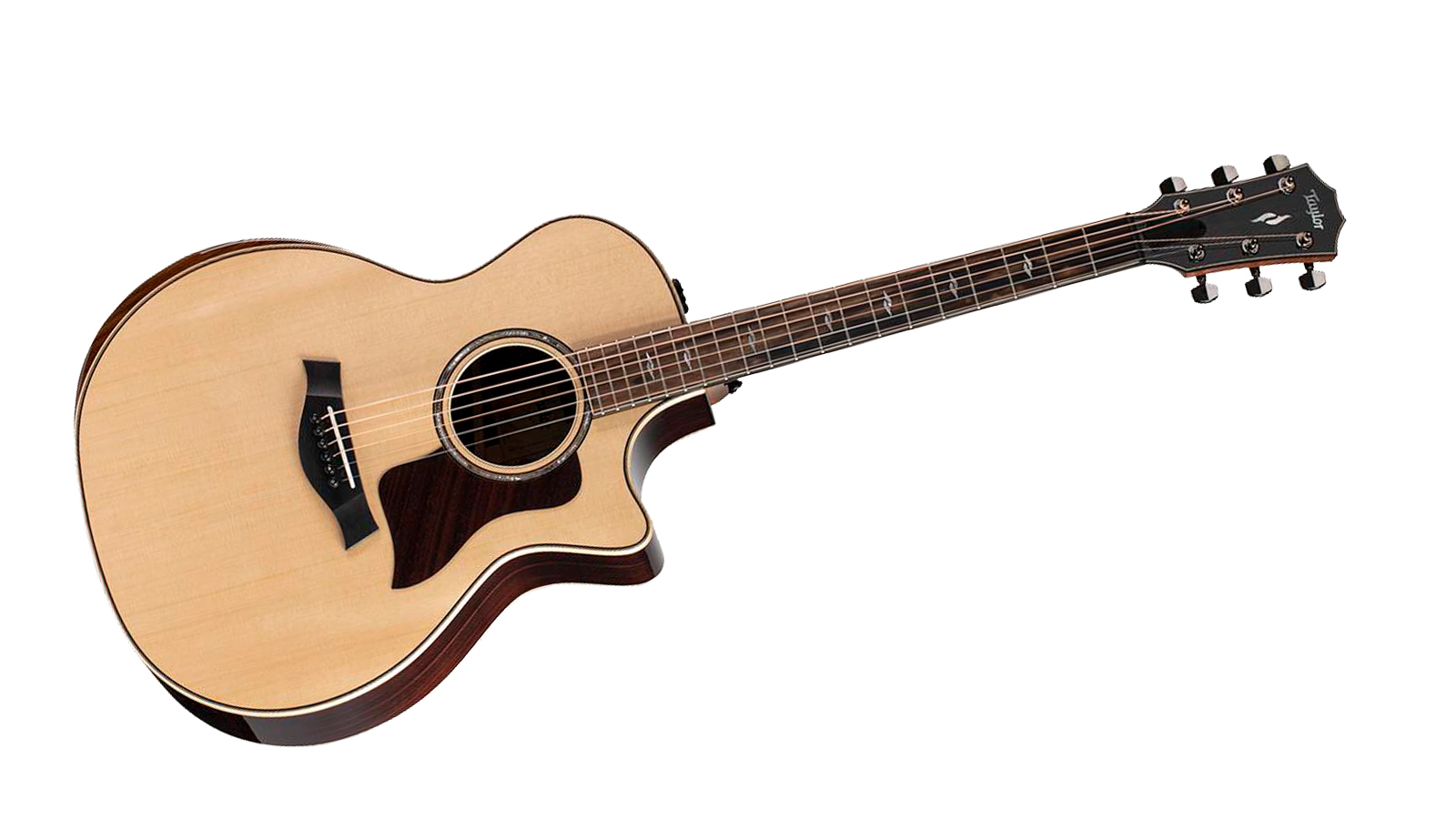
1. Taylor 814ce
Our expert review:
Specifications
Reasons to buy
Reasons to avoid
Just as dreadnoughts will forever be associated with Martin, the Grand Auditorium size is true Taylor territory. It's Taylor's most sought-after body style and this, the 814ce complete with Venetian cutaway, is its flagship model.
If you're searching for a 'desert island' guitar to play indefinitely beneath the swaying palms, put this on your list of possible six-strings. Slightly smaller than a Dread', it's the versatile, comfortable guitar that does it all.
Aided no doubt by Taylor's V-Class bracing, it's got a voice that's easily deep and powerful enough to handle strong flatpicking and aggressive strumming duties. At the same time, its sweet, balanced, well-defined midrange makes it eminently suitable for more delicate fingerstyle.
Of course, it's also a stunner. The classic combination of Sitka spruce top, Indian rosewood back and sides, mahogany neck and ebony fretboard may be conventional, but it's a look we'll never tire of.
When poorly executed, details such as venetian cutaways and armrests can ruin the pure lines of an acoustic but that's not a concern here. What a guitar.
Read the full Taylor 814ce review
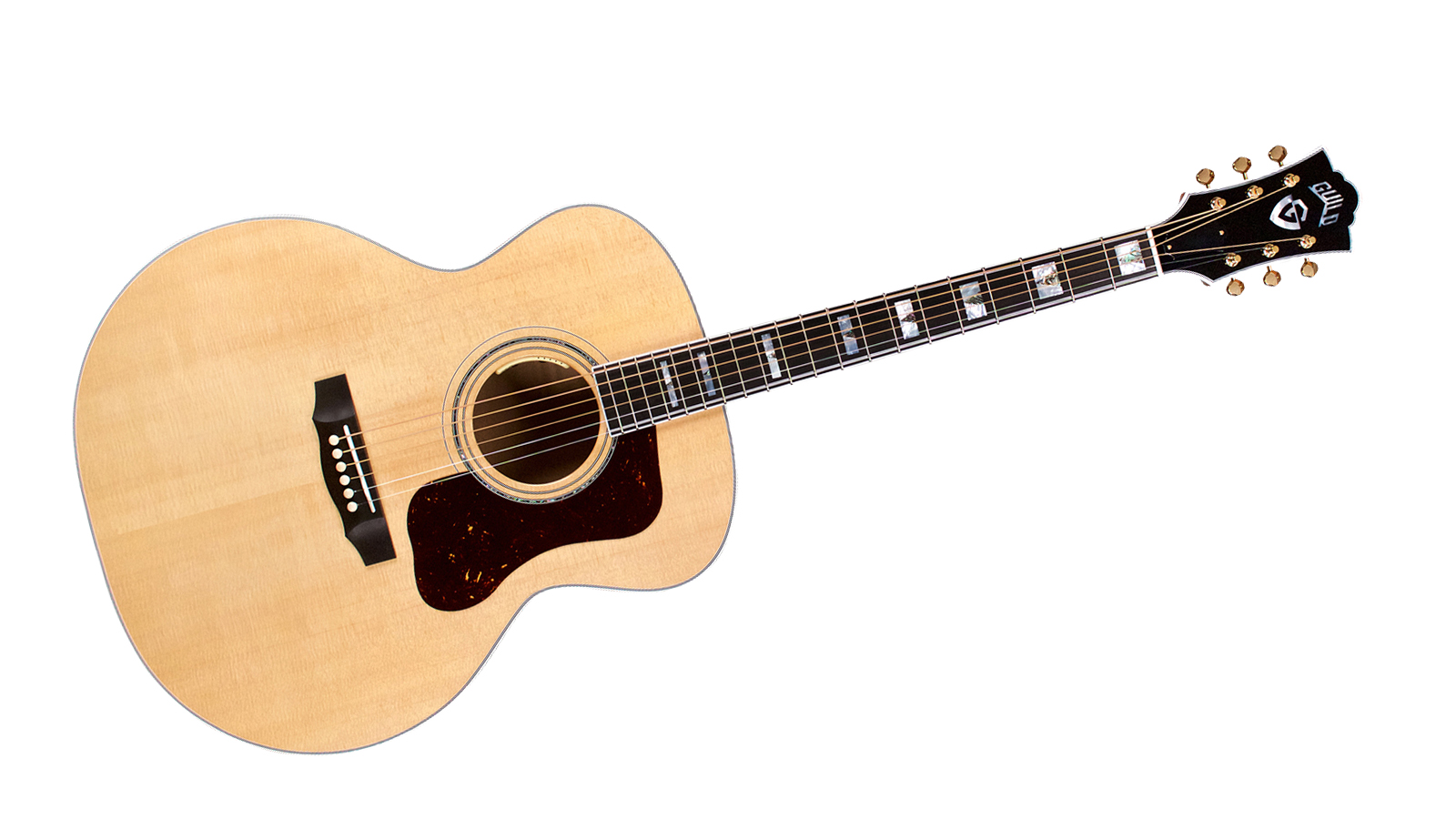
2. Guild F-55E
Our expert review:
Specifications
Reasons to buy
Reasons to avoid
We do love a big curvaceous jumbo! The Guild F-55E featured here is a fantastic example of this full-bodied breed and here's why.
Maple jumbos, like the F-55E, are often on a par with Dreadnoughts when it comes to volume, but they sit very differently in the mix. Where some Dreadnoughts can be a touch bass-heavy, maple Jumbos have a brighter, articulate tone that will more easily cut through other instruments or sit alongside vocals. So, they can match or exceed a Dreadnought's power but don't get bogged down as easily.
Beauty is, of course, in the eye of the beholder, but we think the F-55E, with its tight-grained Sitka spruce top and arch-pressed maple back and sides, looks absolutely gorgeous. No expense has been spared when it comes to appointments. The mahogany neck has a walnut centre strip for strength, the fingerboard is a prime slab of ebony, the inlays are either mother-or-pearl or abalone and the tuners are open-geared Gotoh SE700s in gold. Finish is a fine coat of nitrocellulose.
Craftsmanship, at this build level, is impeccable and the included LR Baggs Anthem mic system provides authentic tones when you're plugged in.
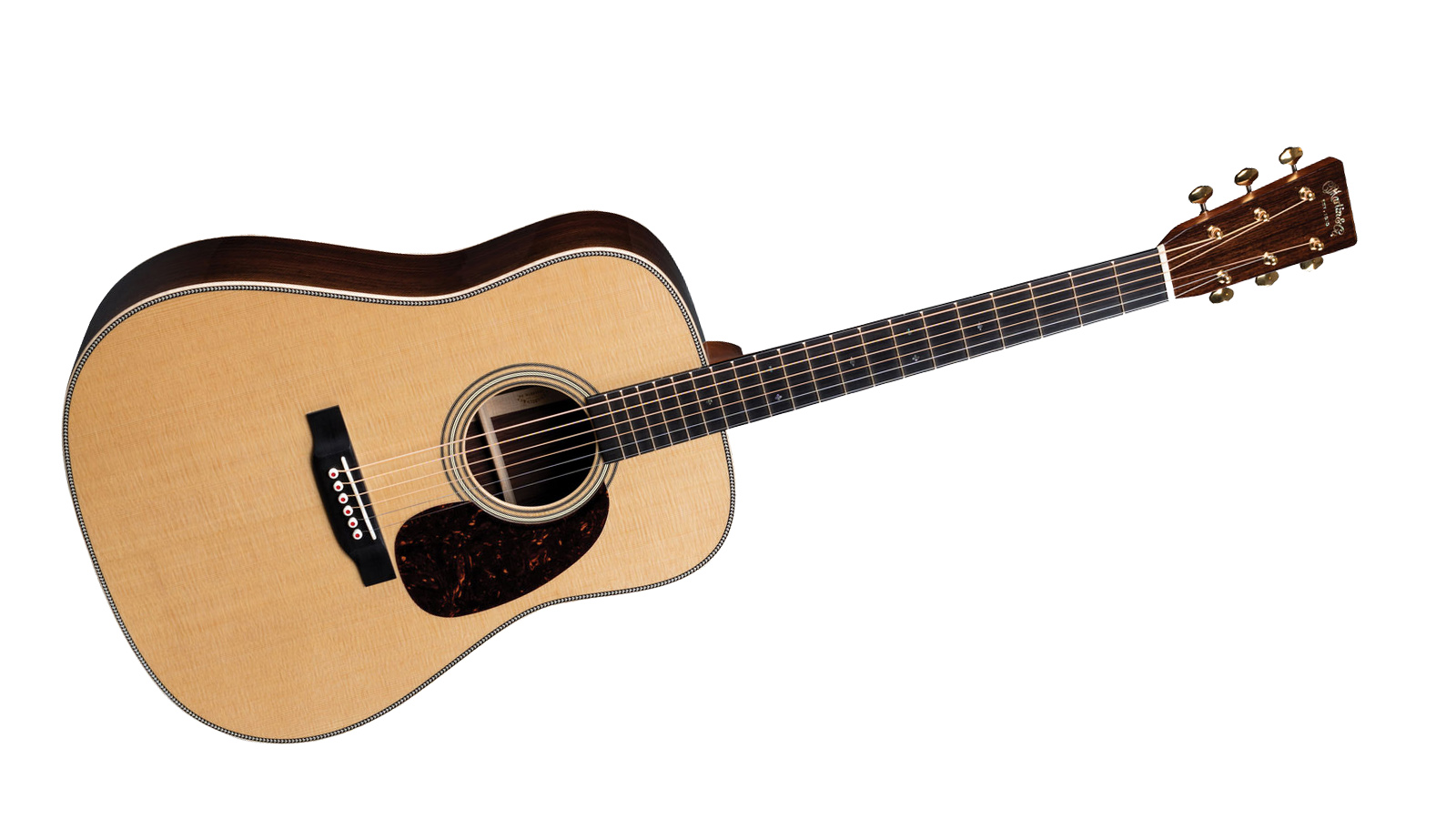
3. Martin D-28 Modern Deluxe
Our expert review:
Specifications
Reasons to buy
Reasons to avoid
Hmm, the very idea of modernising the D-28, perhaps Martin's most venerated model. Isn't that, well, sacrilegious? Don't most of us lust after an original vintage model?
Fear not, the D-28 Modern Deluxe hasn't lost its classic looks nor its iconic sound. What it has gained is a few contemporary features together with a raft of vintage inspired appointments that should delight purists and modernists alike.
The modern features include Liquidmetal bridge pins that, when teamed with the D-28's carbon fibre/spruce sandwiched bridge plate, increase volume by about 3-5dB.
Vintage appointments are more plentiful, this is a top-line Martin after all. There's a torrefied Sitka spruce Vintage Tone System top, flamed maple binding, gold-tint frets, gold Waverly open-gear tuners with butterbean knobs, and a 1930's style script logo inlaid in pearl on the headstock.
The asymmetric neck profile was also vintage inspired, by a 1930's Martin. It starts off comfortably chunky by the nut but gradually becomes slimmer as you move towards the heel.
As it turns out, this D-28 is more deluxe than modern. We can all sleep easy.
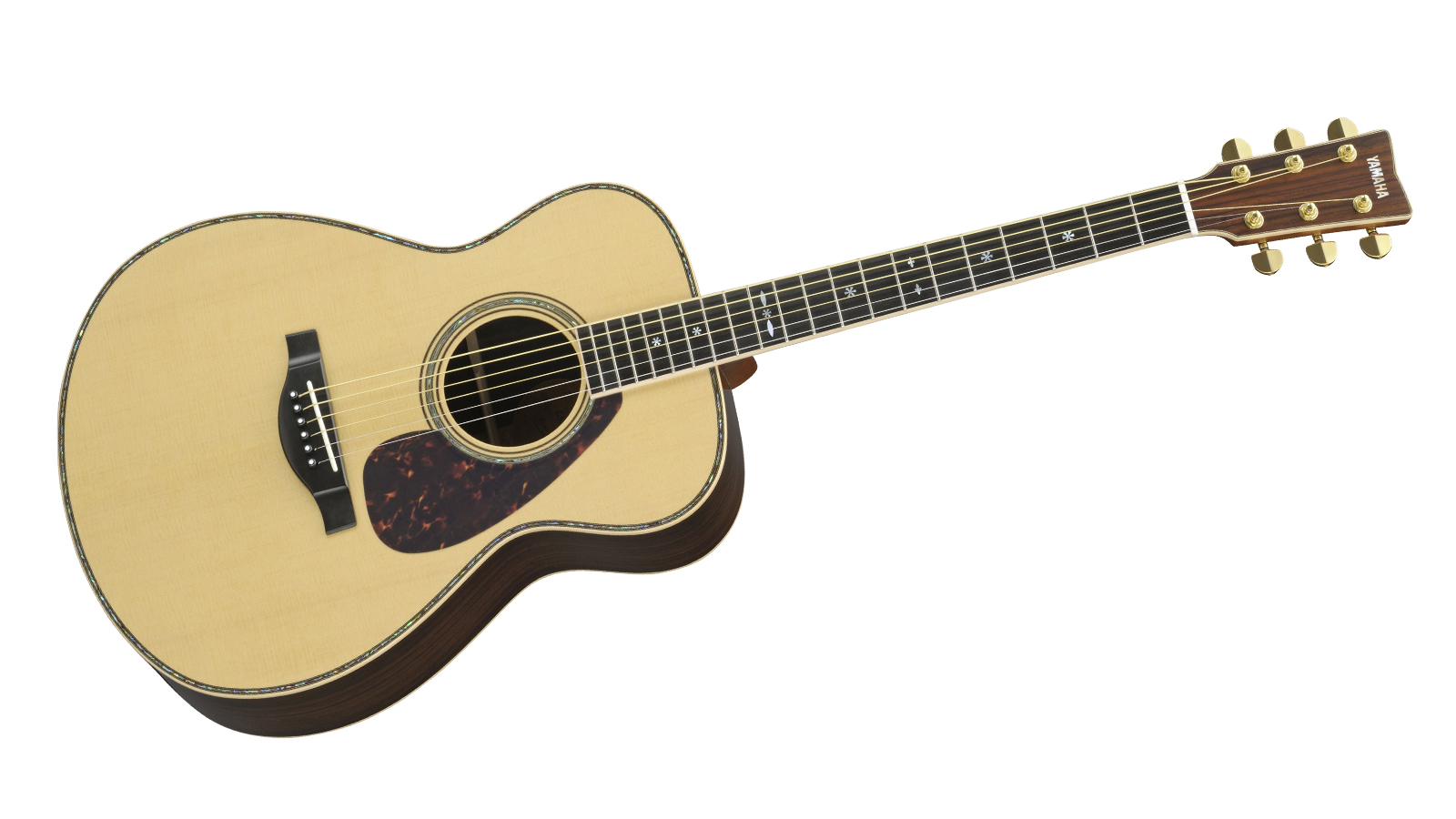
4. Yamaha LS36
Our expert review:
Specifications
Reasons to buy
Reasons to avoid
Yamaha guitars aren't just for beginners on a budget. There, we said it – you're now in on one of the music industry's best kept secrets. It's odd that a brand renowned for making some of the world's finest pianos still suffers a somewhat downmarket reputation for its guitars isn't it?
Perhaps it's because no pro players have ever been associated with Yamaha? Other than John Lennon, John Denver, Paul Simon, Frank Gambale, Andy Taylor, Burt Jansch, Carlos Santana, Keith Urban, Joe Bonamassa…
Which brings us nicely to the LS36, the sleeper in this guide if ever there was one. Hand-built by skilled Japanese luthiers in a small custom shop in Hamamatsu, it's an absolute triumph of a guitar.
Yamaha has such buying power that it has access to a huge selection of the world's best tonewoods, and it's not shy about using them – book-matched torrefied Engelmann spruce, Indian rosewood and the darkest ebony. Abalone inlays abound, and the LS36 is finished in ultra-thin, highly-polished nitrocellulose lacquer.
The LS36 is approximately Martin OM sized, with a voice so sweet, so well-balanced that it’s a fingerstyle player's dream. With a current RRP of $5,092/£5,742 they're not cheap, but they are regularly discounted, so snap one up if you ever find one at a bargain price.
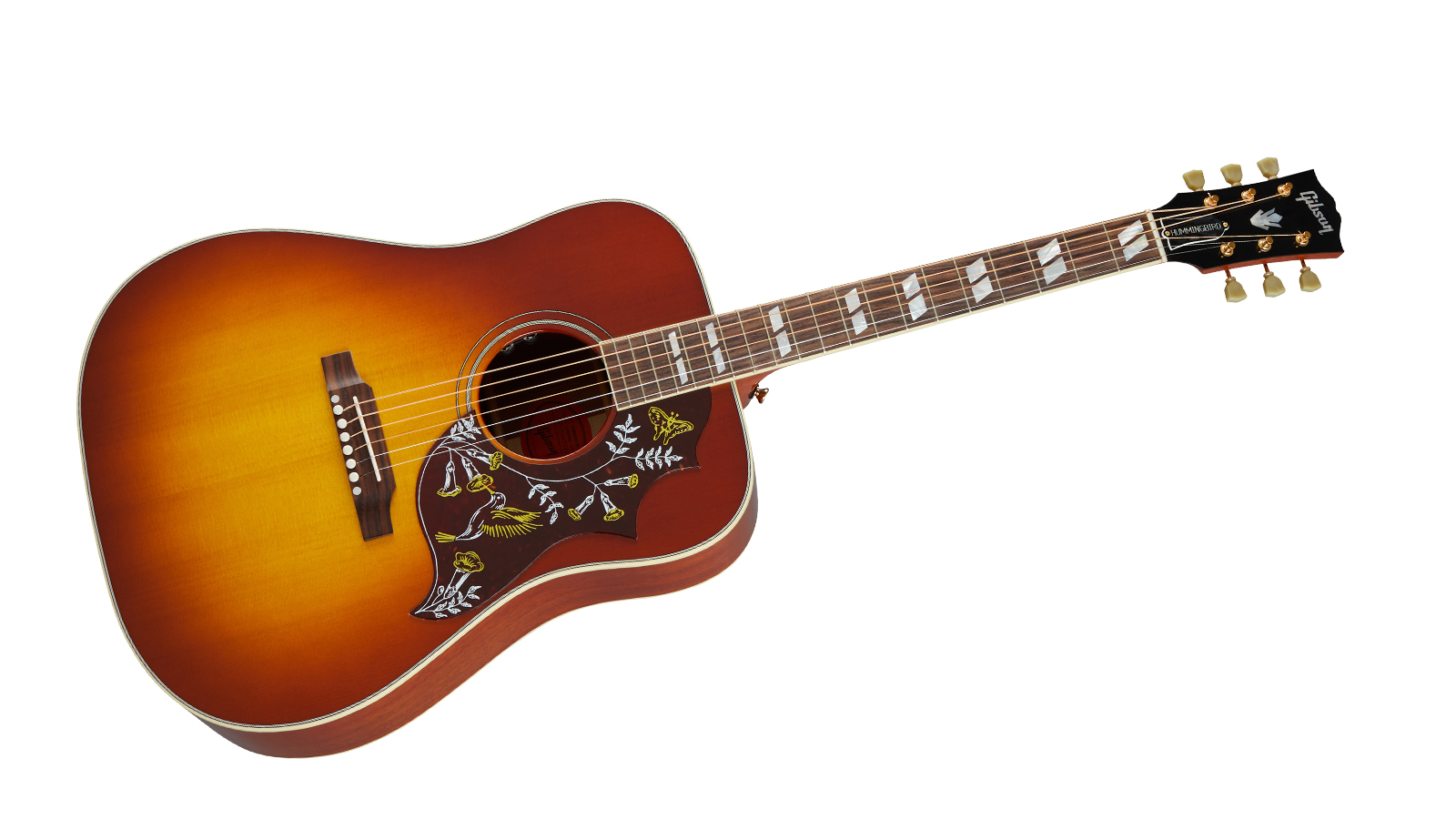
5. Gibson Hummingbird Original
Our expert review:
Specifications
Reasons to buy
Reasons to avoid
Heck, it's not subtle but it is one hell of a guitar. If you're the kind of person who loves making strong visual statements then we invite you to strap on a Gibson Hummingbird Original in Heritage Cherry Sunburst and strum a big ol' open E chord.
This Gibson is no mere flight of fancy though, it's far from all show and no go. Player's love the square-shouldered Hummingbird for its big bird sound that provides plenty of volume but also a surprisingly balanced tone. Yes, as you'd expect from a Dread', a rich bass tone is present but here it's complemented perfectly by muscular mids.
Beneath the showy sunburst finish is a Sitka spruce top, while the back and sides are mahogany, hence the beefy mids. All of the Hummingbird's appointments are delightfully OTT, from the mother-of-pearl block parallelogram inlays, through the double binding to the gold-plated Gotoh tuning machines. Then there's that massive floral masterpiece of a pickguard, complete with adorable hummingbird…
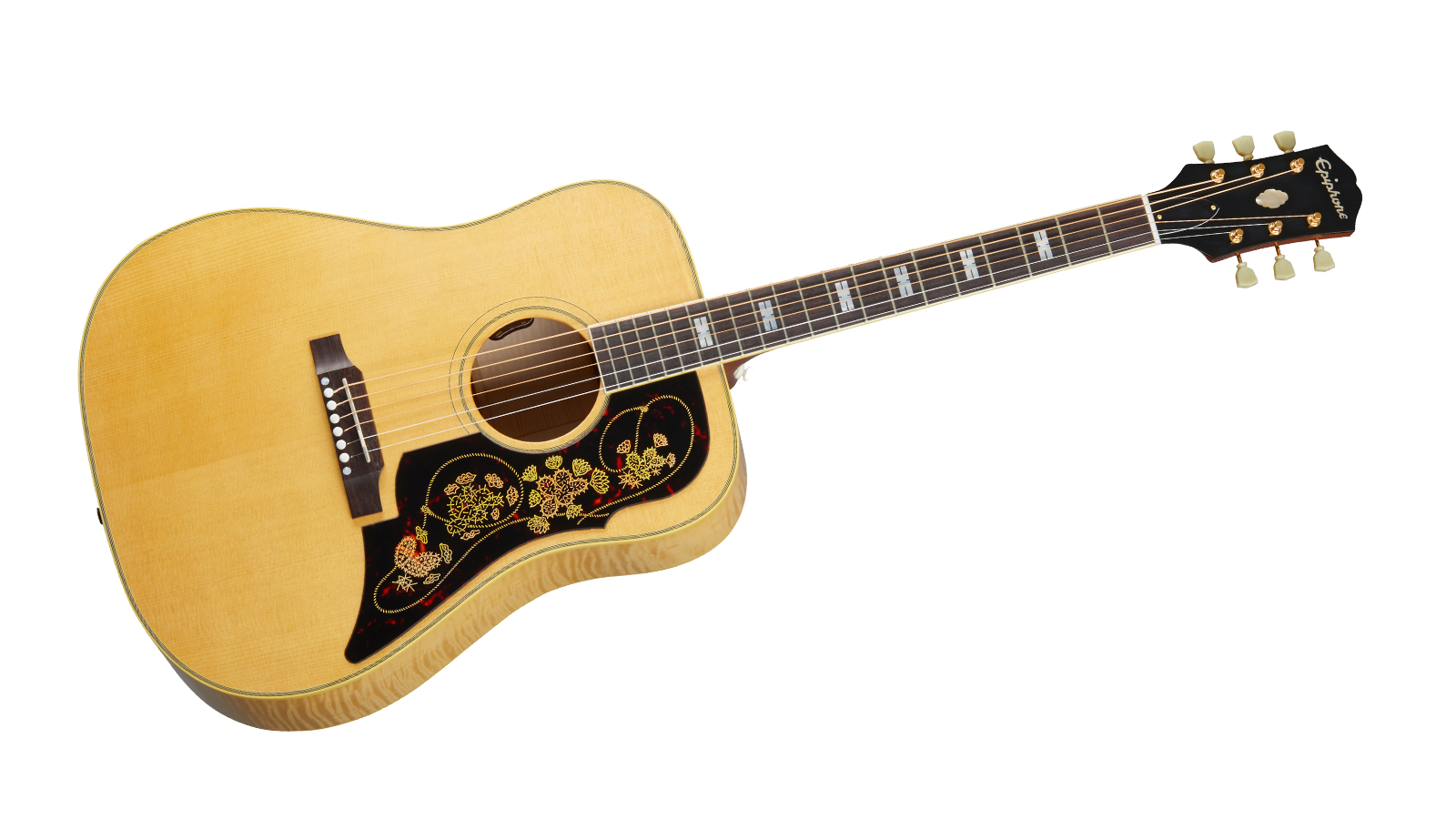
Specifications
Reasons to buy
Reasons to avoid
It's wonderful to have an Epiphone in this list. Sure, it's been Gibson's entry-level, sibling brand for decades now, and it does a fine job of introducing great quality, affordable interpretations of Gibson classics to the masses.
However, the brand also has its own rich heritage; a back catalogue of stunning models too good to be manufactured only in cut-price guise, if at all. The Frontier is one of them, and now it's back, hand-crafted in the USA by Gibson luthiers.
This is a beautiful looking guitar that we prefer in 'Antique Natural' because the fine Sitka spruce top, and figured maple back and sides, are just too good to be hidden behind a sunburst finish.
If you're concerned that maple will make the Frontier sound too bright or brash, don't be. In fact, it helps to make a powerful guitar of this size more balanced by adding a welcome dose of clarity. Consequently, this is a characterful guitar that works superbly as both a fingerpicker and a strummer.
Admittedly, it takes courage to spend this amount on an Epiphone, but this is a brave new Frontier that's well worth exploring.
Read the full Epiphone USA Collection Frontier review
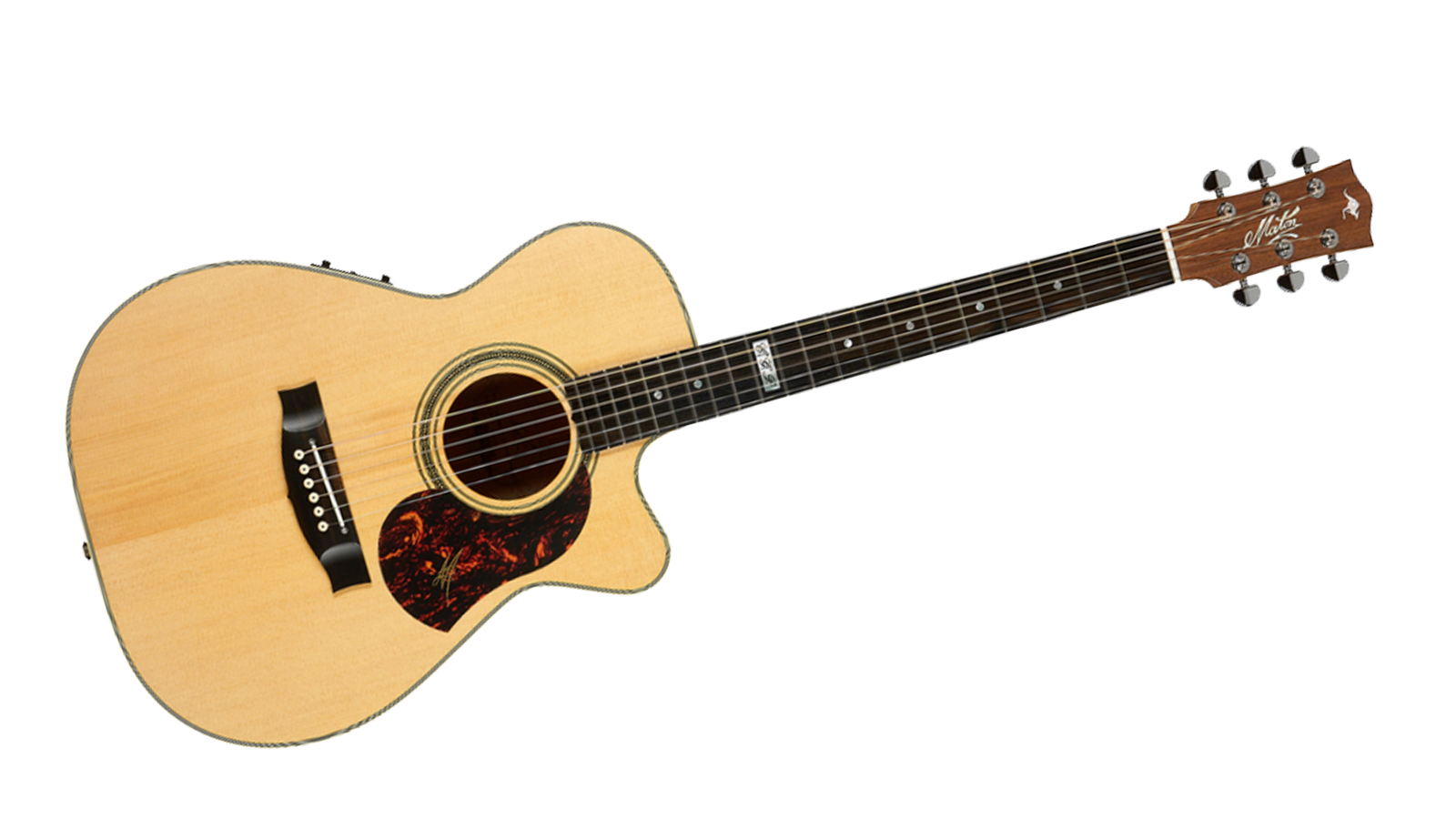
7. Maton EBG808TEC Tommy Emmanuel
Our expert review:
Specifications
Reasons to buy
Reasons to avoid
Maybe it's fitting that Australian brand Maton has a fellow countryman as an ambassador, they've sure lucked-out with Tommy Emmanuel! Tommy, one of the world's most accomplished acoustic guitarists, has been playing Maton's for decades and this is one of his three signature models.
If you've ever watched Tommy play, you'll know that the word 'percussive' doesn't even begin to describe his style. His Maton guitars are marred with deep scars from being hit, scraped, slapped and struck with everything from the full force of his hand to drum brushes. Yet, at the same time, he coaxes such sweet, honeyed tones from these instruments.
The EBG808TEC has been developed by Maton and Tommy to be capable of both delicate expression and out-and-out power. It's also built tough enough to withstand the regular, everyday rigours of touring as well as the physical onslaught Tommy unleashes on it during every performance.
If you're a fan of Tommy, or just need an acoustic guitar that's not going to let you down on the road, the EBG808TEC could be a hit. And a slap…
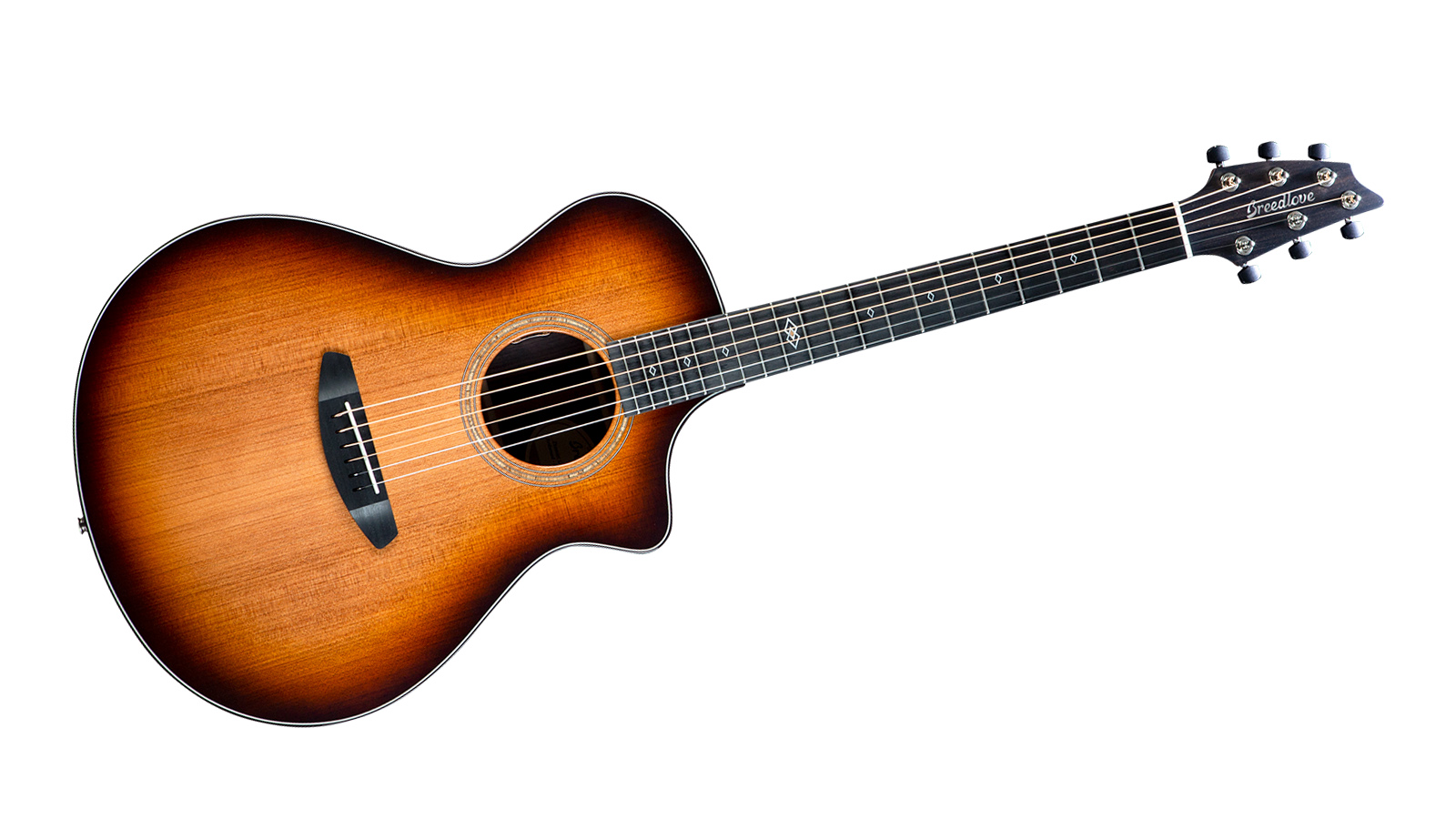
8. Breedlove Premier Concert Edgeburst CE
Our expert review:
Specifications
Reasons to buy
Reasons to avoid
Here's a guitar with a sleek body and a distinctive venetian cutaway, but the real attention grabber is its Redwood top. Breedlove has been building guitars with Sequoia sempervirens tops for more than 25 years now, so it knows a thing or two about them.
Redwood has similar tonal characteristics to cedar, exhibiting a soft attack and rich, warm overtones. It partners well with rosewood, which is especially valued for its bright piano-like highs. Use this combination to build a medium-sized guitar, like this Breedlove Concert, and you'll end up with an instrument that fingerstylists will drool over.
Why not just use Cedar? Well, Oregon-based Breedlove is committed to sourcing native, salvaged fallen timber or individually harvested trees with which to build its guitars and Redwood is one of its favoured, sustainable tonewoods. We think it looks very attractive, sounds great and if it helps save the planet then that can only be a good thing.
Elsewhere, this Premier Concert has a mahogany neck, ebony fretboard, ebony bridge and maple inlays. Breedlove has a small workforce that only produces a few thousand guitars a year, so each and every one is just that bit special. All are examples of impressive craftsmanship.
Besides the 'burst finish, this is an enchantingly understated guitar that lets its tone do the talking.
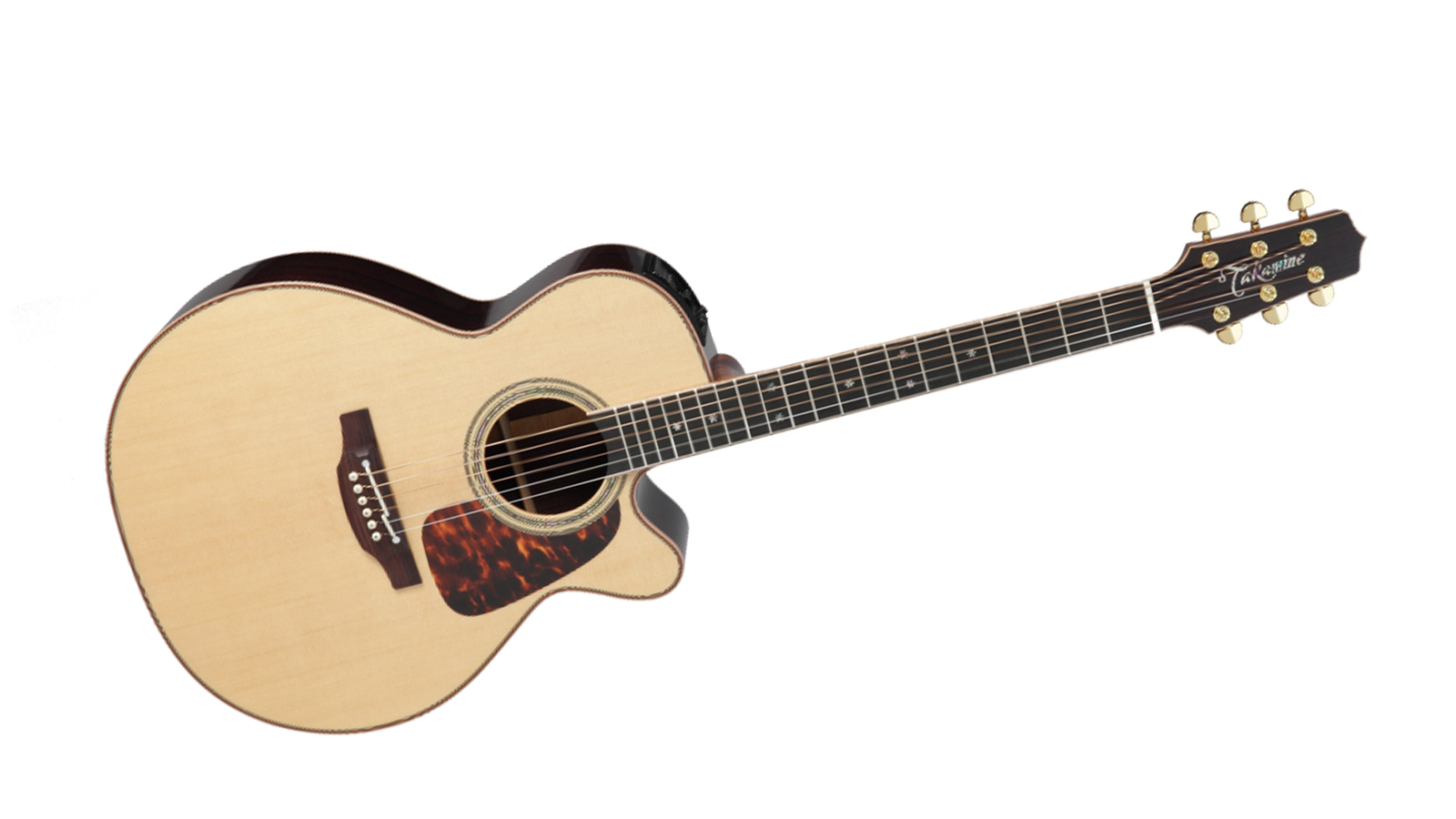
9. Takamine P7NC
Our expert review:
Specifications
Reasons to buy
Reasons to avoid
Here's an interesting concept, if a little niche. With its P7NC model Takamine has developed a guitar that is specifically voiced to complement the human vocal range. In other words, this guitar won't cut across, or in any way interfere with, the sonic space that a vocalist takes up in a mix or during a performance.
The key to this is the P7NC's unique body shape and size, it's what Takamine calls its NEX style. Essentially, it's a scaled down Jumbo body that combines the power of a Dreadnought with the balance, articulation and comfort of a smaller guitar. What's more, there's no boominess or muddiness to get in the way of your vocals.
Knowing that a guitar like this would be perfect for live performance, Takamine has equipped the P7NC with its Cooltube TCP-3 preamp system. This runs a 12AU7 tube at low voltage so that guitarists can benefit from that warm, rich tube sound but with zero distortion.
The remaining specs are fairly conventional – spruce top, rosewood back and sides, mahogany neck – but the Japanese build quality is peerless at this price level. If you're a vocalist, the P7NC makes for the perfect performance partner.
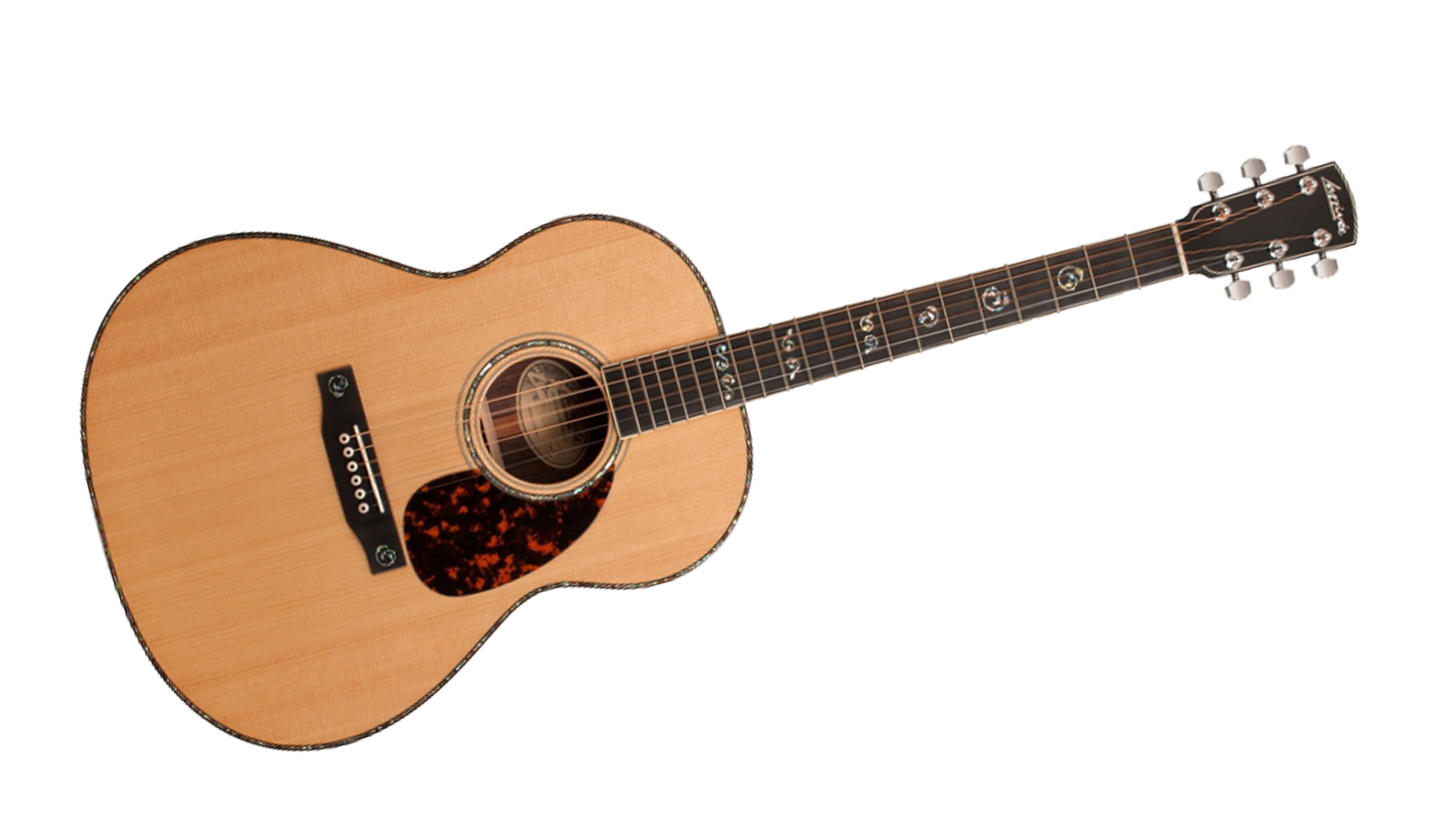
10. Larrivée L-10 Deluxe
Our expert review:
Specifications
Reasons to buy
Reasons to avoid
If we were to drop a significant amount of cash on a Larrivée acoustic, this is where we'd put our money, the L-10 Deluxe. Falling in line, just below the 73 Presentation and Custom Shop models, Larrivée's Deluxe acoustics feature the highest-grade materials but with a more reserved aesthetic.
Larrivée is famous for its breathtakingly intricate inlays, which look incredible but can be a little overwhelming when featured en masse. The Deluxe line lives on the very fringes of conservative, with just a smattering of said inlays around the sound hole, the binding and fretmarkers. There's the option of adding more if you wish!
Cosmetics aside, the primary reasons for choosing an L-10 are its size, its build and the quality of materials used, all of which influence its heavenly tone. Founder Jean Larrivée settled on the L shape, which stands for Larrivée in case you were wondering, in the '70s because it hits the sweet spot for almost every kind of playing, but particularly fingerstyle.
Somewhere between a Dreadnought and an OM in size and shape, the L exhibits rich bass that's solid and tight, fantastic projection, a strong midrange and highs that are crystal clear.
Add the finest quality, sustainably sourced Sitka Spruce and Rosewood to the mix, together with Larrivée's artisanal craftsmanship and you'll be picking up a guitar that's impossible to put down.
Best high-end acoustic guitars: Buying advice
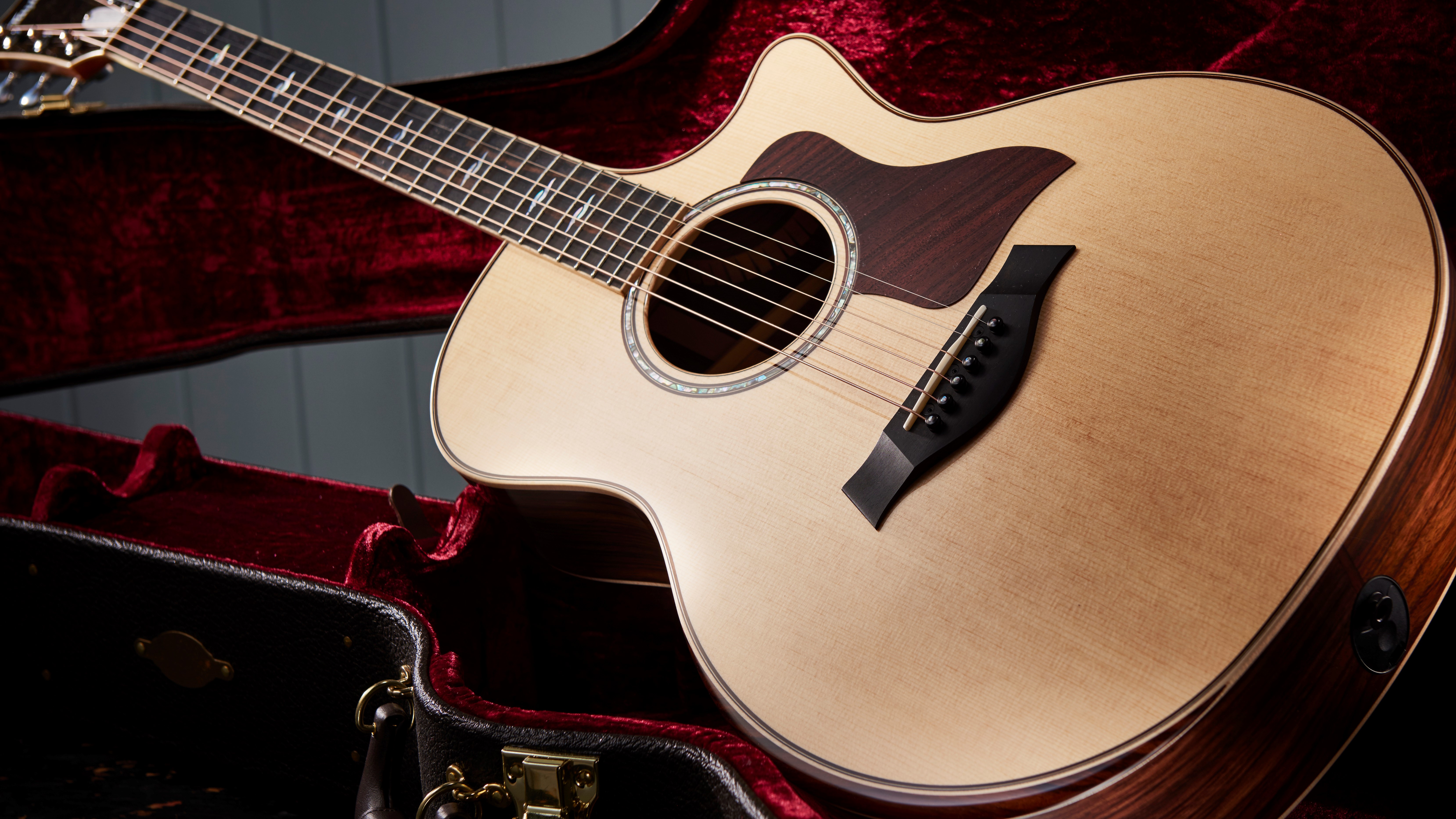
Understanding body shape
You can trust Guitar World
If you're relatively new to playing acoustic guitar, or upgrading to a high-end acoustic from a budget model, then you're probably familiar with the ubiquitous dreadnought model yet likely confused by all the other shapes and sizes out there. Join the club.
It seems that every maker has its own take on guitar shapes and their names, unfortunately there are no standards. Nevertheless, let's try to unpick some of the mysteries and misnomers by investigating four common shapes.
Parlor
These are diminutive guitars with a lower bout width of about 13" and a depth of 4.25". Small, lightweight, with low volume they're perfect for playing at home, hence the name. Parlor guitars tend to have quite prominent mids, which makes them great for blues, folk and slide, but it's not the most versatile sound.
000/OM/Grand Auditorium
These mid-sized guitars are a favorite with fingerstylists. Less deep than a Dreadnought at about 4.5", and with a lower bout of around 15" they are loved for their very balanced sound that features a rich bass but equally prominent mids and clear highs. Volume is good for most circumstances. Taylor's version of the Grand Auditorium is its most celebrated model.
Dreadnought
This large, square-shoulder shape, which will be familiar to everyone, was introduced by Martin in 1916 to provide more volume for guitarist competing for attention in ensembles.
However, with that volume comes additional bass response, which isn't always welcome. It's a handful, with a lower bout width of around 16", which some smaller players find cumbersome to play. Still, the Dreadnought is an immensely popular shape, with a very distinctive well-loved tone. The Martin D-18, D-28 and D-45 are archetypal Dreads.
Jumbo
Big, bold and curvaceous, Gibson introduced the Jumbo in the '30s to compete with Martin's D-shaped guitars. Typically, Jumbos rival Dreadnoughts for volume but they have a more balanced tone with slightly less bass response. Most feature a rounded lower bout of about 17", a squeezed waist to provide that iconic silhouette, and a depth of about 5".
Essentially, bigger-bodied guitars have an enhanced bass response, small-bodied guitars are brighter with more pronounced mids, while mid-bodied guitars, like the OM, provide a balance between the two.
But that's not the whole story, luthiers can boost or compensate for certain frequencies by using specific tonewoods.
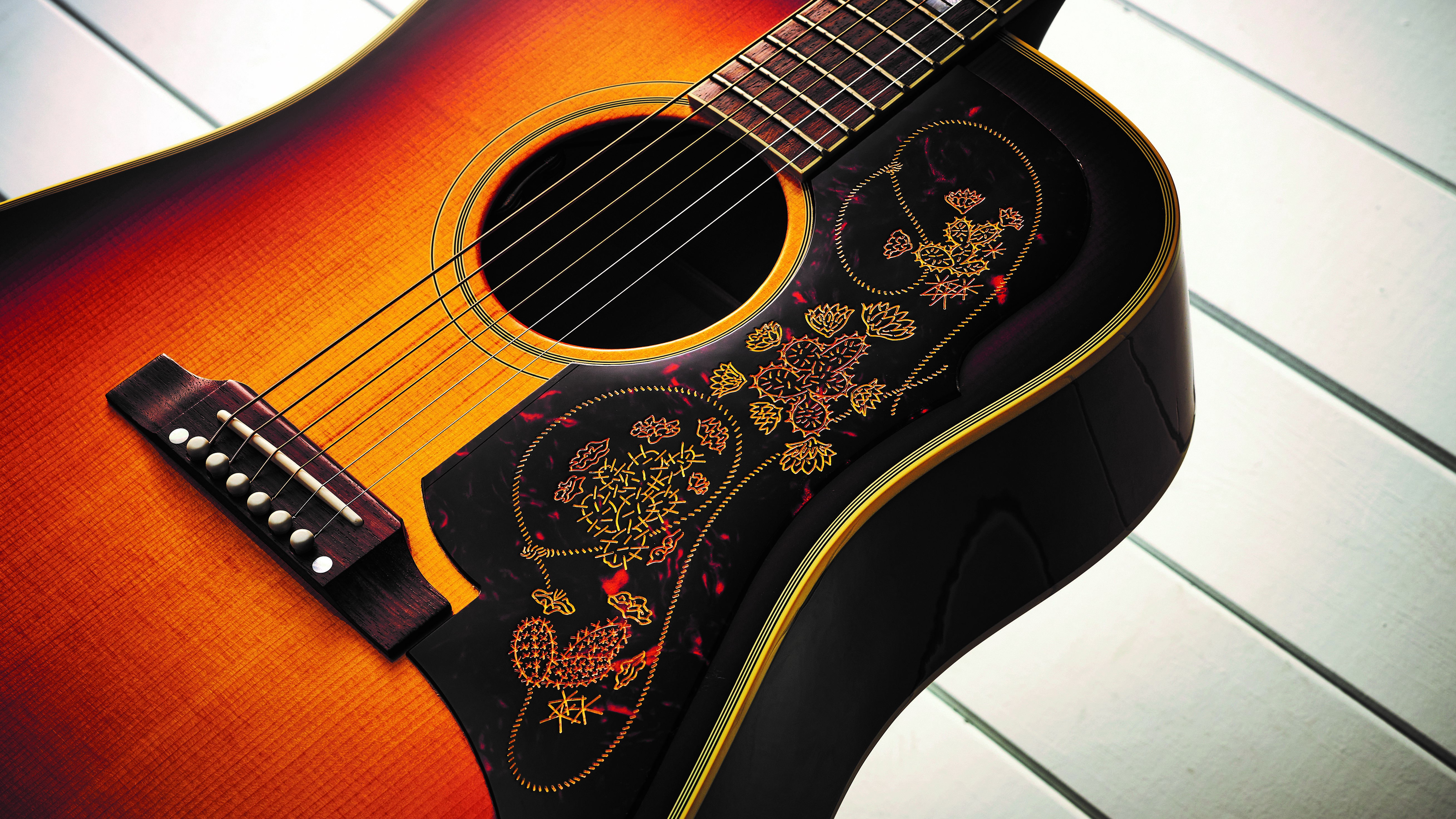
Tonewoods
Choosing one tonewood over another can have a significant impact on a high-end acoustic guitar’s tone and, arguably, the most tone-defining part of an acoustic is its top or soundboard. Selecting the right piece of wood to be used here is so critical that experienced luthiers will tap and listen to a piece of unbraced timber to ascertain whether it's cracked and to gauge how resonant it is.
It's no coincidence that almost every guitar in this guide features a Sitka spruce top. Sitka is light, stiff and exhibits a wide tonal range that's perfect for most music genres and playing styles. The only style it doesn't respond particularly well to is a very light touch. Sitka is native to North West America, and though commonly found in new plantations nearly all old growth has disappeared.
Contrary to popular belief, grain spacing has no bearing on tone, but we've been conditioned to prefer the look of a tightly grained top.
Contrary to popular belief, grain spacing has no bearing on tone, but we've been conditioned to prefer the look of a tightly grained top.
Engelmann spruce is similar to Sitka but has a richer midrange and a mature, sonic smoothness. It does respond better to a light touch, yielding a delightful complexity. Good quality Engelmann is now hard to find, making it more expensive than Sitka.
Cedar is less dense than spruce, a characteristic that imbues it with a rich, lush warmth. It doesn't feature that often on steel-strung guitar tops but many fingerstyle players like it due to the way it naturally compresses sound. It's not suitable for heavy strumming. Redwood shares similar characteristics.
Rosewood is one of the most popular woods for guitar backs, sides and fretboards. It looks beautiful and its balanced tonal characteristics – rich bass, scooped mids, sparkling highs – make it extremely versatile. It goes particularly well with Sitka spruce, or almost any top tonewood for that matter. The much-prized Brazilian Rosewood is now impossible to source, due to legal restrictions, so most luthiers use Indian Rosewood, the next best thing.
Mahogany is commonly used for guitar necks, but it also works well for tops, backs and sides. It has punchy, solid mids with low overtones and a good high-end response. Some guitarists, blues players in particular, love that big meaty mids sound. Mahogany, though endangered, is still relatively easy to source.
Maple is a popular wood for the back and sides of Jumbo guitars. It's a very hard wood, which produces a wonderfully focussed clarity that can help to balance a large guitar's naturally strong bass response.
Ebony is a hard wood that's commonly used on the fingerboards of high-end guitars. It's known for imparting an articulate mid-range and pleasing brightness to a guitar's tone.
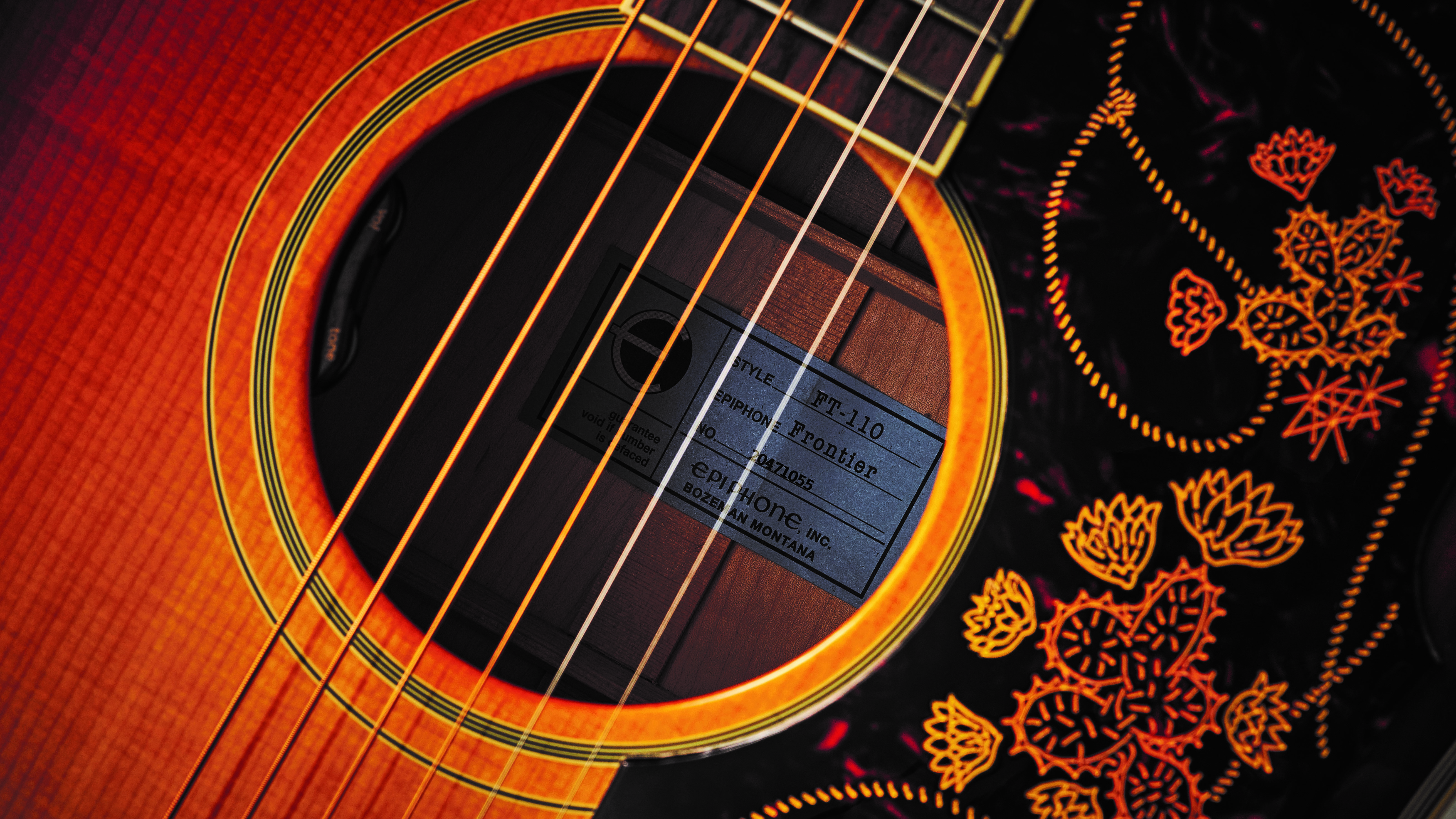
High-end build features
How will a high-end acoustic differ from a mid-range or cheaper model? It goes without saying that you can expect a very high standard of workmanship with incredible attention to detail. When you're paying in the thousands for a guitar it is quite reasonable to expect it to be completely flawless, inside and out.
Depending on the brand, your guitar may have been hand-crafted in a small batch by a select group of luthiers, helped along with modern plant such as CNC machines. At the very top end, you can expect it to have been completely handmade by a single master luthier using mostly hand tools.
European and US-made guitars often command a premium over instruments made in the Far East or Central and South America, partly due to labor costs and partly due to prejudice. Given the opportunity, any skilled luthier can produce a high-end guitar regardless of where they reside.
Wood will have been chosen primarily for its tone, but it should look premium too. So, expect booked-matched tops, flamed maple, gorgeously figured rosewood and so on. Just be aware that many guitar manufacturers are now making a real effort to become more sustainable. Some timber that would have previously been discarded as second-rate, such as streaky ebony, is now being used with pride.
A high-end acoustic guitar provides an excellent opportunity, a blank canvas if you like, for a luthier to fully express their artistic ambitions through intricate purflings, bindings and inlays
Tuning machines should be top notch, as should preamps, pickups and mics, if fitted. Mid-range guitars will often be fitted with electronics as a selling point, but this logic is turned on its head with high-end acoustics. Many purists prefer their guitars to be unsullied with electronic gear of any kind, so expect this kind of kit to be an optional extra, or maybe an additional model with the suffix 'e'.
A high-end acoustic guitar provides an excellent opportunity, a blank canvas if you like, for a luthier to fully express their artistic ambitions through intricate purflings, bindings and inlays. Some luthiers are famously restrained, favoring little more than tasteful soundhole decorations and some subtle fretmarkers, while others run riot with all manner of elaborate additions. Done properly, this is highly skilled, time consuming work, so expect to pay a premium.
Related buyer’s guides
- Best high-end electric guitars: the finest electrics money can buy
- Best acoustic guitars under $1,000: get great tone for less
- Best acoustic guitar pickups for all budgets
- Best acoustic guitar amps to let your acoustic guitar tone shine
- Best electric guitars under $2,000: for intermediate and pro players
- Looking to spend as little as possible? Check out the best cheap acoustic guitars
All the latest guitar news, interviews, lessons, reviews, deals and more, direct to your inbox!
When Simon's childhood classical guitar teacher boasted he 'enjoyed a challenge', the poor man had no idea how much he'd underestimated the scale of the task ahead. Despite Simon's lack of talent, the experience did spark a lifelong passion for music. His classical guitar was discarded for an electric, then a room full of electrics before Simon discovered the joys of keys. Against all odds, Simon somehow managed to blag a career as a fashion journalist, but he's now more suitably employed writing for Guitar World and MusicRadar. When not writing or playing, he can be found terrifying himself on his mountain bike.

